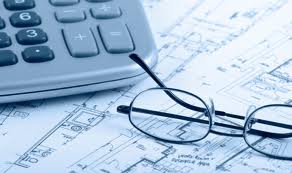Real Estate Cycles: Understanding the Phases and Dynamics
Real estate cycles are a fundamental aspect of the property market, influencing decisions from the individual homeowner level to global investment strategies. These cycles are characterized by periodic fluctuations in real estate demand, prices, and construction volumes. Understanding these cycles is crucial for investors, developers, homeowners, and policymakers alike. This multi-part article series delves into the intricacies of real estate cycles, exploring their phases, causes, and effects, and offering insights into navigating these cycles effectively.
Part 1: The Four Phases of Real Estate Cycles
Real estate cycles can be broadly divided into four phases: Expansion, Peak, Contraction, and Recovery. Each phase has distinct characteristics and implications for market participants.
- Expansion: This phase is marked by increasing demand, rising property prices, and a boost in construction activities. Economic growth fuels expansion, leading to job creation and higher incomes, which in turn increases the demand for real estate. During expansion, vacancy rates for properties tend to decrease, and rents and property values start to rise.
- Peak: The peak phase is characterized by the highest property prices and rents in the cycle. Demand continues to grow, but at a slowing pace, as the market approaches its saturation point. Construction projects initiated during the expansion phase come to completion, potentially leading to an oversupply in the market.
- Contraction: During contraction, demand for real estate begins to decline, leading to increased vacancy rates and falling rents and prices. This phase can be triggered by various factors, including economic downturns, increases in interest rates, or an oversupply of properties. Investors and homeowners may find this phase challenging, as the value of real estate assets starts to decrease.
- Recovery: The recovery phase sees the market stabilizing from the lows of the contraction phase. Demand starts to pick up, vacancy rates gradually decrease, and prices and rents begin to stabilize. This phase sets the stage for the next expansion, as investors and developers gain confidence and start planning new projects.
Part 2: Factors Influencing Real Estate Cycles
Several factors can influence the duration and intensity of each phase in the real estate cycle, including economic conditions, interest rates, government policies, and global events.
- Economic Conditions: The overall health of the economy is a primary driver of real estate cycles. Economic growth leads to job creation and income growth, boosting demand for real estate. Conversely, economic downturns can lead to reduced demand and falling prices.
- Interest Rates: Interest rates play a crucial role in the affordability of financing for both buyers and developers. Lower interest rates can stimulate demand by making borrowing cheaper, while higher rates can dampen demand by increasing the cost of borrowing.
- Government Policies: Policies related to taxation, zoning, and development can significantly impact the real estate market. For instance, tax incentives for property investment or development can stimulate market activity, while restrictive zoning laws can limit supply and affect prices.
- Global Events: Events such as pandemics, wars, and financial crises can have profound effects on real estate cycles. These events can disrupt economic activity, affect investor confidence, and lead to sudden changes in demand and supply dynamics.
Part 3: Navigating Real Estate Cycles
Understanding real estate cycles is crucial for making informed decisions, whether you’re buying a home, investing in property, or involved in development. Here are some strategies for navigating these cycles:
- Research and Planning: Stay informed about the current phase of the real estate cycle and anticipate future trends. This knowledge can help you time your investments and divestments more effectively.
- Diversification: Diversifying your real estate portfolio across different types of properties and geographical areas can reduce risk. Different market segments and locations may be affected differently by the same phase of the cycle.
- Long-Term Perspective: Real estate is typically a long-term investment. A long-term perspective can help investors weather the downturns and benefit from the upswings in the cycle.
- Flexibility: Being flexible and adaptable in your strategy can be beneficial. For example, in a contraction phase, it might be wise to focus on rental income rather than selling properties at lower prices.
Real estate cycles are a complex but essential aspect of the property market. By understanding the phases of these cycles and the factors that influence them, market participants can make more informed decisions and navigate the ups and downs more effectively. Whether you’re a seasoned investor or a first-time homebuyer, a deep understanding of real estate cycles is an invaluable tool in your decision-making arsenal.
